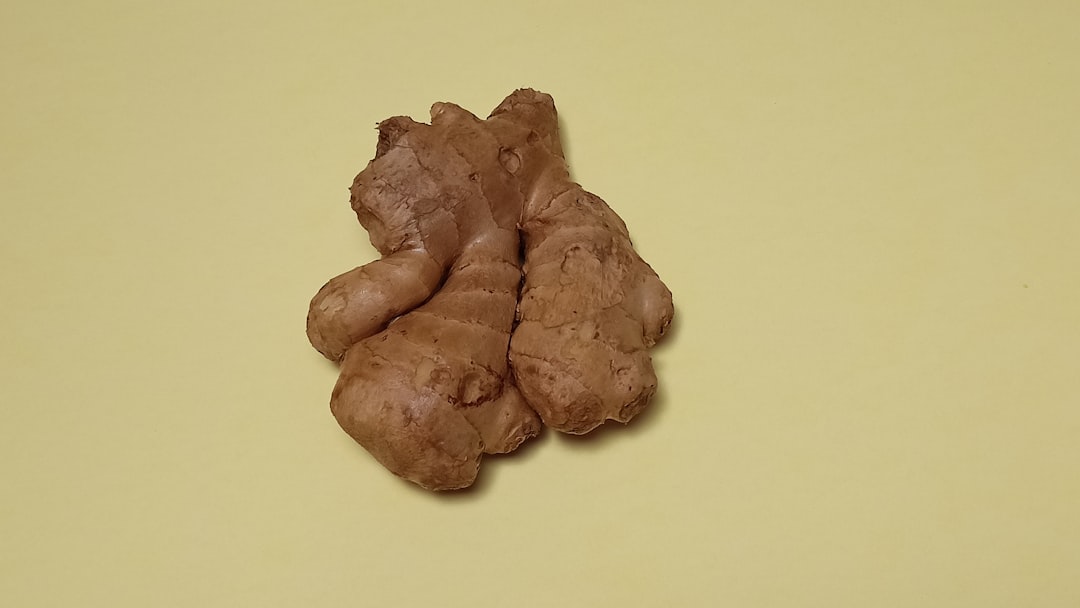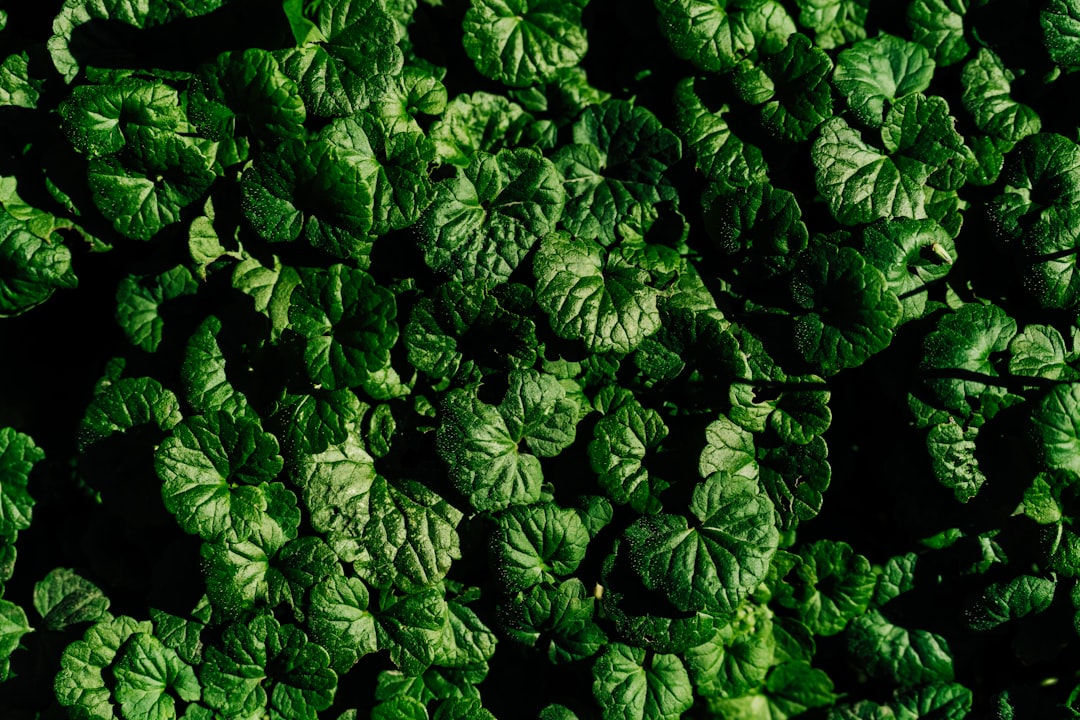Support our educational content for free when you buy through links on our site. Learn more
Unlocking the Ultra Flexitarian Diet: 10 Surprising Benefits for 2025 🌱

Are you ready to transform your eating habits without sacrificing flavor? The Ultra Flexitarian Diet is the perfect blend of plant-based goodness and occasional indulgences that can lead to a healthier lifestyle while being kind to the planet. Imagine enjoying delicious meals that not only nourish your body but also contribute to a more sustainable world! Did you know that adopting this diet could potentially save 5.5 billion tonnes of CO₂ equivalent emissions each year? That’s a staggering statistic that highlights the impact of our food choices.
In this article, we’ll dive deep into the ultra flexitarian lifestyle, exploring its benefits, practical tips for transitioning, and mouth-watering recipes to get you started. Whether you’re a seasoned flexitarian or just curious about this emerging trend, there’s something here for everyone. So, let’s embark on this flavorful journey together!
Key Takeaways
- Embrace Plant-Based Eating: The ultra flexitarian diet focuses on a 75-90% plant-based approach, allowing for minimal meat and dairy.
- Health Benefits: This diet can lower the risk of chronic diseases and support weight management.
- Environmental Impact: Adopting this lifestyle can significantly reduce your carbon footprint and promote sustainability.
- Flexibility is Key: Enjoy the freedom to indulge in high-quality animal products occasionally without guilt.
- Delicious Recipes Await: Discover a variety of scrumptious plant-based recipes that make healthy eating exciting!
Ready to dive into the world of ultra flexitarianism? Check out our recommended Flexitarian Cookbooks and explore plant-based products from brands like Beyond Meat and Impossible Foods to kickstart your journey! 🌍
Table of Contents
Quick Tips and Facts
Understanding the Ultra Flexitarian Diet: A New Wave of Eating
The Evolution of Flexitarianism: From Vegetarian to Ultra Flexitarian
Top 10 Benefits of Adopting an Ultra Flexitarian Lifestyle
How to Transition to an Ultra Flexitarian Diet: Tips and Tricks
Delicious Ultra Flexitarian Recipes to Get You Started
Ultra Flexitarian vs. Other Diets: What Sets It Apart?
The Environmental Impact of an Ultra Flexitarian Diet
The Nutritional Powerhouse: How an Ultra Flexitarian Diet Supports Health
Common Misconceptions About Ultra Flexitarianism
Future Food Trends: The Rise of Plant-Based Eating
Author: Meet the Experts Behind the Ultra Flexitarian Movement
Conclusion
Recommended Links
FAQ
Reference Links
Quick Tips and Facts
- What is Ultra Flexitarianism? 🌱 It’s a mostly plant-based diet that allows for meat and dairy in extreme moderation, focusing on reducing overall animal product consumption.
- Environmental Impact: Adopting an ultra flexitarian diet can potentially save 5.5 billion tonnes of CO₂ equivalent per year, which is about 40% of all food emissions.
- Health Benefits: This diet could reduce global mortality rates by up to 10% by 2050, thanks to its emphasis on whole foods and reduced meat intake.
- Animal Welfare: By following this diet, you could help prevent the slaughter of billions of animals each year.
- Transitioning Made Easy: Start by incorporating more plant-based meals into your week and gradually reduce your meat consumption.
Understanding the Ultra Flexitarian Diet: A New Wave of Eating
The Ultra Flexitarian Diet is not just a trend; it’s a lifestyle shift that emphasizes a plant-forward approach to eating while still allowing for the occasional indulgence in meat and dairy. Think of it as a bridge between traditional omnivorous diets and more restrictive vegetarian or vegan diets.
Key Features of the Ultra Flexitarian Diet
- Mostly Plant-Based: Aim for a diet that is 75-90% plant-based. This includes fruits, vegetables, whole grains, legumes, nuts, and seeds.
- Moderation is Key: Meat and dairy are consumed in extreme moderation, focusing on high-quality, ethically sourced options when chosen.
- No Red or Processed Meat: This diet strictly bans red and processed meats, which are linked to various health issues.
The Evolution of Flexitarianism: From Vegetarian to Ultra Flexitarian
Flexitarianism has evolved significantly over the years. Initially, it was about reducing meat consumption while still allowing for some animal products. Now, the Ultra Flexitarian Diet takes it a step further by promoting a more sustainable and health-conscious approach.
Historical Perspective
- Vegetarianism: Originated as a lifestyle choice primarily for ethical and health reasons.
- Flexitarianism: Emerged as a more flexible approach, allowing for occasional meat consumption.
- Ultra Flexitarianism: Represents the latest evolution, focusing on environmental sustainability, health benefits, and ethical considerations.
Top 10 Benefits of Adopting an Ultra Flexitarian Lifestyle 🌍
- Reduced Carbon Footprint: By cutting down on meat, you contribute to a significant decrease in greenhouse gas emissions.
- Improved Health: Studies suggest that plant-based diets can lower the risk of chronic diseases like heart disease and diabetes.
- Weight Management: A diet rich in whole foods and low in processed foods can help maintain a healthy weight.
- Enhanced Nutrient Intake: Plant-based foods are packed with vitamins, minerals, and antioxidants.
- Animal Welfare: Reducing meat consumption means fewer animals are raised and slaughtered for food.
- Sustainable Eating: Supports local and seasonal food systems, reducing the environmental impact of food transport.
- Diverse Diet: Encourages trying new foods and recipes, making meals exciting and varied.
- Community Impact: Joining a movement that promotes sustainability can foster a sense of community.
- Culinary Creativity: You’ll discover new ways to prepare and enjoy plant-based meals.
- Long-Term Sustainability: This diet is easier to maintain over the long run compared to more restrictive diets.
How to Transition to an Ultra Flexitarian Diet: Tips and Tricks
Transitioning to an ultra flexitarian diet can be a breeze with these simple steps:
Step-by-Step Guide
- Start Slow: Begin by designating a few days a week as meat-free. Try Meatless Mondays or Plant-Based Fridays!
- Explore Plant-Based Proteins: Incorporate foods like lentils, chickpeas, tofu, and tempeh. They’re delicious and packed with protein!
- Experiment with Recipes: Check out our Flexitarian Recipes for inspiration.
- Educate Yourself: Read about the benefits of plant-based eating and how it impacts health and the environment.
- Join a Community: Engage with others who are on the same journey. Online forums and local groups can provide support and motivation.
Delicious Ultra Flexitarian Recipes to Get You Started 🍽️
Here are a few scrumptious recipes to kickstart your ultra flexitarian journey:
| Recipe Name | Key Ingredients | Cooking Time | Nutritional Benefits |
|---|---|---|---|
| Chickpea Salad | Chickpeas, cucumber, tomatoes, herbs | 15 mins | High in protein and fiber |
| Quinoa Stir-Fry | Quinoa, mixed vegetables, tofu | 30 mins | Rich in complete proteins and vitamins |
| Lentil Soup | Lentils, carrots, celery, spices | 40 mins | Packed with iron and antioxidants |
| Zucchini Noodles | Zucchini, marinara sauce, basil | 20 mins | Low in carbs, high in vitamins |
Ultra Flexitarian vs. Other Diets: What Sets It Apart? 🤔
Understanding how the ultra flexitarian diet compares to other popular diets can help clarify its unique benefits.
| Diet Type | Meat Consumption | Focus Area | Environmental Impact |
|---|---|---|---|
| Vegan | None | Plant-based only | Highest reduction in emissions |
| Vegetarian | No meat, allows dairy | Plant-based with dairy | Moderate reduction in emissions |
| Pescetarian | Fish allowed | Seafood and plants | Lower emissions than meat-heavy diets |
| Flexitarian | Mostly plant-based | Flexible meat options | Significant reduction in emissions |
| Ultra Flexitarian | Minimal meat and dairy | Mostly plant-based | Highest potential for emissions reduction |
The Environmental Impact of an Ultra Flexitarian Diet 🌱
The ultra flexitarian diet is not just beneficial for your health; it also plays a crucial role in environmental sustainability.
Key Environmental Insights
- Land Use: Agriculture occupies half of the habitable land on Earth. By reducing meat consumption, we can free up land for reforestation and biodiversity.
- Water Usage: Producing beef requires about 15,000 liters of water per kilo, whereas plant-based diets use significantly less.
- Greenhouse Gas Emissions: Meat and dairy account for about 14.5% of global greenhouse gas emissions. Transitioning to an ultra flexitarian diet can drastically reduce this figure.
The Nutritional Powerhouse: How an Ultra Flexitarian Diet Supports Health
Adopting an ultra flexitarian diet can lead to numerous health benefits. Here’s how:
Nutritional Benefits
- Heart Health: A diet rich in fruits, vegetables, and whole grains can lower cholesterol levels and reduce the risk of heart disease.
- Weight Management: Plant-based diets are often lower in calories and higher in fiber, making it easier to maintain a healthy weight.
- Reduced Disease Risk: Studies suggest that plant-based diets can lower the risk of chronic diseases, including diabetes and certain cancers.
Common Misconceptions About Ultra Flexitarianism ❌
-
“You can’t get enough protein.”
- Reality: Plant-based proteins like beans, lentils, and quinoa provide ample protein.
-
“It’s too restrictive.”
- Reality: The ultra flexitarian diet is flexible, allowing for occasional meat and dairy.
-
“It’s expensive.”
- Reality: Many plant-based foods are budget-friendly, especially when bought in bulk.
Future Food Trends: The Rise of Plant-Based Eating 🌍
As more people become aware of the environmental and health benefits of plant-based diets, the trend is only expected to grow. Innovations in plant-based foods, such as Impossible Foods and Beyond Meat, are making it easier than ever to enjoy delicious meals without compromising on taste.
What’s Next?
- Increased Availability: Expect more plant-based options in restaurants and grocery stores.
- Sustainable Practices: More brands are focusing on sustainable sourcing and production methods.
- Community Engagement: As awareness grows, so does the community of like-minded individuals advocating for a healthier planet.
Author: Meet the Experts Behind the Ultra Flexitarian Movement
At Flexitarian Diet™, our team of chefs, dietitians, and health coaches are passionate about promoting a balanced and sustainable approach to eating. We believe that food should be delicious, nutritious, and kind to the planet.
Conclusion

The ultra flexitarian diet offers a balanced approach to eating that emphasizes plant-based foods while allowing for occasional meat and dairy. By adopting this lifestyle, you can improve your health, support animal welfare, and contribute to a more sustainable planet. Ready to make the switch? 🌱
Recommended Links
- Flexitarian Basics
- Flexitarian Lifestyle
- Benefits of Flexitarian Diet
- Flexitarian Nutrition Facts
- Flexitarian Recipes
FAQ

What is the difference between flexitarian and ultra flexitarian?
The ultra flexitarian diet is more restrictive regarding meat and dairy consumption, focusing on a predominantly plant-based diet.
Can I still eat out on an ultra flexitarian diet?
Absolutely! Many restaurants now offer plant-based options, making it easier to stick to your diet while dining out.
How do I ensure I’m getting enough nutrients?
Focus on a variety of whole foods, and consider consulting a dietitian for personalized advice.
Reference Links
- Green Queen: Ultra Flexitarian Diet
- UCL: Which Diet Will Help Save Our Planet?
- TED-Ed: Vegetarian, Vegan, Flexitarian, Pescetarian
Conclusion

The Ultra Flexitarian Diet is a fantastic way to embrace a healthier lifestyle while making a positive impact on the planet. By focusing on a predominantly plant-based diet and allowing for minimal consumption of meat and dairy, you can enjoy a variety of delicious foods while also supporting your health and the environment.
Summary of Positives and Negatives
Positives:
- Health Benefits: Reduces the risk of chronic diseases and promotes overall well-being.
- Environmental Impact: Significantly lowers carbon emissions and conserves resources.
- Flexibility: Allows for occasional indulgences in meat and dairy, making it easier to maintain over time.
- Culinary Variety: Encourages trying new recipes and ingredients, enhancing your cooking skills.
Negatives:
- Potential Nutritional Gaps: Without careful planning, you might miss out on certain nutrients typically found in animal products.
- Social Challenges: Dining out or attending events may require more planning to find suitable options.
In summary, we confidently recommend the ultra flexitarian diet as a sustainable and health-conscious choice. By incorporating this approach into your life, you can enjoy the best of both worlds—delicious meals and a healthier planet! 🌍
Recommended Links
-
👉 Shop Flexitarian Cookbooks:
-
Check out these brands for plant-based products:
- Beyond Meat: Amazon | Beyond Meat Official
- Impossible Foods: Amazon | Impossible Foods Official
- Silk Almond Milk: Amazon | Silk Official
FAQ

What is an ultra flexitarian diet and how does it differ from a regular flexitarian diet?
The ultra flexitarian diet is a more restrictive version of the flexitarian diet, which allows for a predominantly plant-based diet while permitting minimal consumption of meat and dairy. Unlike a regular flexitarian diet, which may include more frequent meat meals, the ultra flexitarian approach emphasizes reducing animal products to a bare minimum, focusing on whole, nutrient-dense foods.
Read more about “What Does a Flexitarian Eat? 10 Delicious Foods to Try! 🌱 …”
What are the potential health benefits of following an ultra flexitarian diet focused on whole foods?
Following an ultra flexitarian diet can lead to numerous health benefits, including:
- Lower risk of chronic diseases: Studies show that plant-based diets can reduce the risk of heart disease, diabetes, and certain cancers.
- Weight management: A diet rich in fruits, vegetables, and whole grains can help maintain a healthy weight.
- Improved digestion: High fiber intake from plant foods promotes gut health and regularity.
What types of animal products are typically included in an ultra flexitarian diet?
The ultra flexitarian diet allows for very limited animal products, primarily focusing on:
- Dairy: Small amounts of high-quality dairy products like yogurt or cheese.
- Meat: Occasional consumption of poultry or fish, while completely avoiding red and processed meats.
Read more about “Do Flexitarians Eat Eggs? Discover 7 Surprising Benefits! 🥚”
How can I ensure I’m getting enough protein and essential nutrients on an ultra flexitarian diet?
To ensure adequate protein and nutrients:
- Incorporate plant-based protein sources: Foods like lentils, chickpeas, quinoa, and tofu are excellent options.
- Focus on variety: Consume a wide range of fruits, vegetables, whole grains, nuts, and seeds to cover your nutritional bases.
- Consider supplements: If necessary, consult a healthcare professional about vitamin B12, omega-3 fatty acids, and iron supplements.
What are some easy and healthy meal ideas for someone following an ultra flexitarian diet?
Here are a few meal ideas:
- Breakfast: Overnight oats topped with fruits and nuts.
- Lunch: Quinoa salad with mixed vegetables and a lemon-tahini dressing.
- Dinner: Stir-fried tofu with broccoli and brown rice.
- Snacks: Hummus with carrot sticks or a handful of mixed nuts.
Is an ultra flexitarian diet a sustainable and environmentally friendly way to eat?
Absolutely! The ultra flexitarian diet significantly reduces your carbon footprint by minimizing meat consumption, which is responsible for a large portion of greenhouse gas emissions. By focusing on plant-based foods, you also contribute to more sustainable agricultural practices and help conserve natural resources.
How does an ultra flexitarian diet align with a focus on mostly vegetarian and whole foods?
The ultra flexitarian diet aligns perfectly with a focus on vegetarian and whole foods by prioritizing plant-based ingredients while allowing for occasional animal products. This approach encourages the consumption of whole, minimally processed foods, which are beneficial for both health and the environment.
What are the key differences between a pescatarian and an ultra-flexitarian diet?
The main differences include:
- Meat Consumption: Pescatarians include fish and seafood as a primary protein source, while ultra flexitarians limit all animal products, focusing primarily on plant-based foods.
- Flexibility: Ultra flexitarians have a more flexible approach to meat and dairy, allowing for very limited consumption, whereas pescatarians regularly consume fish.




